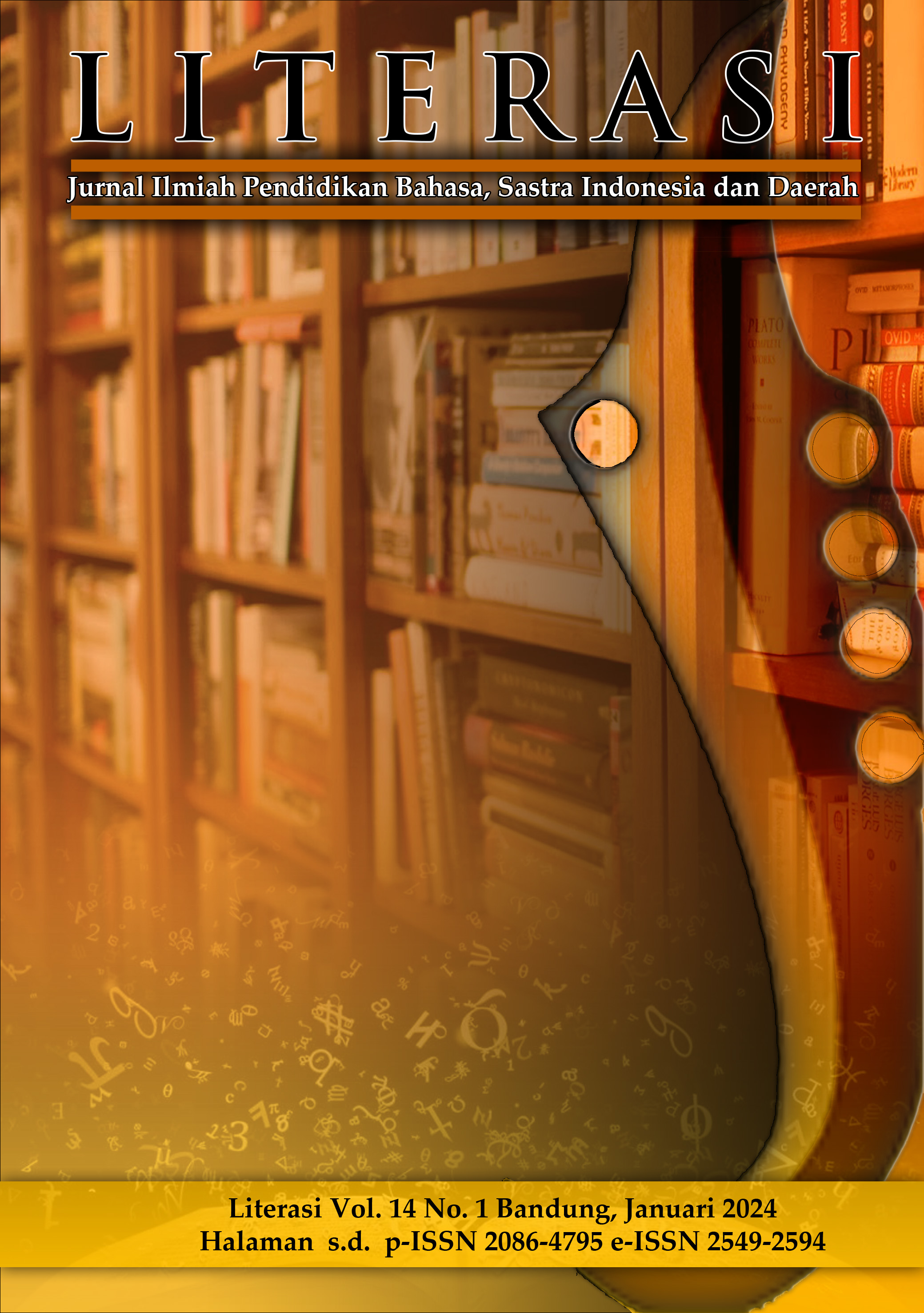ANALISIS KEBUTUHAN PENGEMBANGAN BAHAN AJAR READ ALOUD BAGI LITERASI EMERGEN
DOI:
https://doi.org/10.23969/literasi.v14i1.9542Keywords:
read aloud, emergent literacy, development of teaching materials.Abstract
Literacy becomes a global concern including in Indonesia. Literacy in Indonesia still needs improvement. The attempt that should not be left in enhancing children’s literacy in Indonesia is the stimulation on young children. In this process, family becomes the main gate which could be acted as the foundation of literacy which is called emergent literacy. Enhancing emergent literacy can optimize their forthcoming literacy development. One of the activities that is believed could support the maturity of emergent literacy phase is read aloud. However, there is no learning materials related about read aloud which can bridging family literacy practitioner and young children to stimulate reading literacy in specific. Therefore, this research attempt to analyze the need of learning materials based on two perspectives which are family literacy practitioner and young children with the age of 3 to 6 years old. Utilizing qualitative research method, with collecting data using questionnaire which were filled by 20 literacy family practitioner. Interviewing 12 boys and girls in total. The result of this research shows from family literacy point of view which is expecting learning material contains clear instruction, interactive contents, reading stimulation, and in the form of children picture book. From the children perspectives shows that there was a need to start forming the story from the theme, the characters, the compulsory component, the material of picture story book, and the appearance of emergent literacy development for young children in the age of 3 to 6 years old particularly in reading literacy.
Downloads
References
Andrea & Turbill. (1984). Towards a Reading-Writing Classroom. Sydney: PETA.
Khotari, C. dkk. (2014). Research Methodology. New Age International
Machado, J. M. (2013). Early Childhood Experiences in Language Arts: Early Literacy. Emerita, Sans Jose City College: Wadsworth Cengage Learning.
Neuman, dkk. (2011). The Role of Enviromental Print in Emergent Literacy. Journal of Early Childhood Literacy, SAGE Journal. Vol. 12, No.3. doi: https://doi.org/10.1177/1468798411417080
Novianti, R., & Garzia, M. (2020). Penggunaan Gadget pada Anak Usia Dini, Tantangan Baru Orang Tua Milenial. Jurnal Obsesi: Jurnal Pendidikan Anak Usia Dini. Vol. 4. No. 2, 1000 – 1010. doi: 10.31004/obsesi.v4i2.490
Nugraha, A., dkk. (2019). The Effects of Background Television oon The Quantity and Quality of Child-directed Speech by Parents. Journal of Children and Media. doi: https://doi.org/10.1088/1742-6596/1175/1/012203
Rahesi,dkk. (2020). “Interaksi Model Membaca Nyaring Bermuatan Buku Cerita Anak dalam Menumbuhkan Literasi Keluarga. Prosiding Seminar Riksa Bahasa XIII.
Rohde, L. (2015). The Comprehensive Emergent Literacy Model: Early Literacy in Context. SAGE Open Journal. 1-11. doi: 10.1177/2158244015577664
Sidik, U. (2020). Kesesuaian Bahan Bacaan Literasi Emergen dengan Pembaca Sasaran. Widyaparwa: Jurnal Ilmiah Kebahasaan dan Kesastraan. Vol. 48, No. 2, 257 – 268. doi: https://doi.org/10.26499/wdprw.v48i2.609
Vukelich, C., dkk. (2011). Teaching Languange and Literacy: Preschool Through Elementary Grades. United States of America: Pearson Education.
Yulianeta, dkk. (2020). Read Aloud Training Module Research and Development to Improve Literacy. Proceedings of the 4th International Conference on Language, Literature, Culture, and Education (ICOLLITE 2020). doi: https://doi.org/10.2991/assehr.k.201215.130
Downloads
Published
Issue
Section
License
Copyright (c) 2024 Literasi: Jurnal Ilmiah Pendidikan Bahasa, Sastra Indonesia dan Daerah

This work is licensed under a Creative Commons Attribution 4.0 International License.
Hak cipta artikel yang diterbitkan di jurnal ilmiah dimiliki oleh penerbit, bukan penulis. Hal ini berkaitan dengan koordinasi hak akses untuk cetak ulang atau penggunaan lainnya. Dalam hal ini penerbit mempunyai keluluasaan untuk mempublikasikan artikel sesuai dengan kesepakanan Transfer Agreement (penyerahan hak cipta) antara penerbit dengan penulis.















